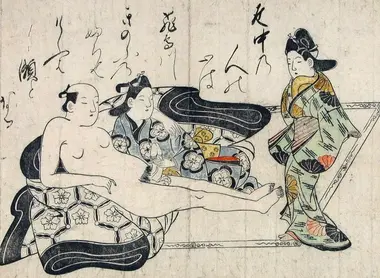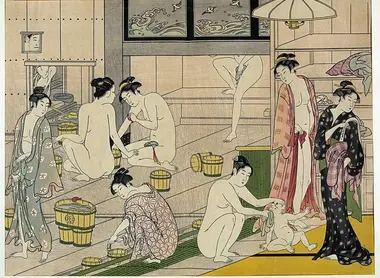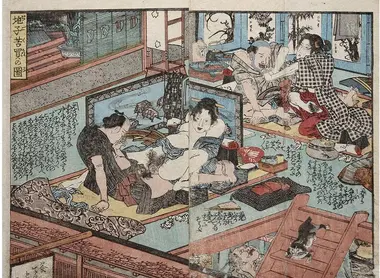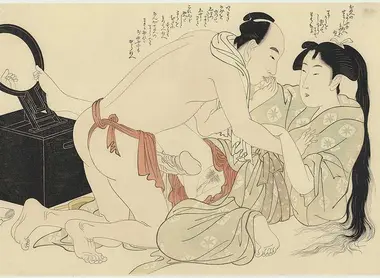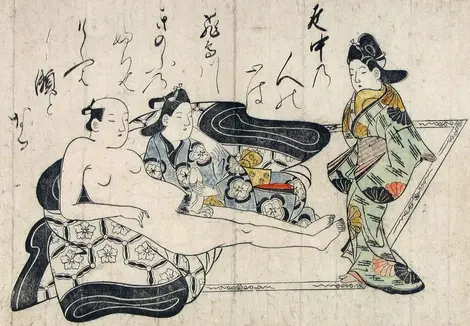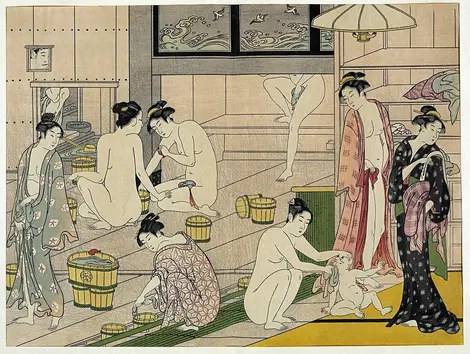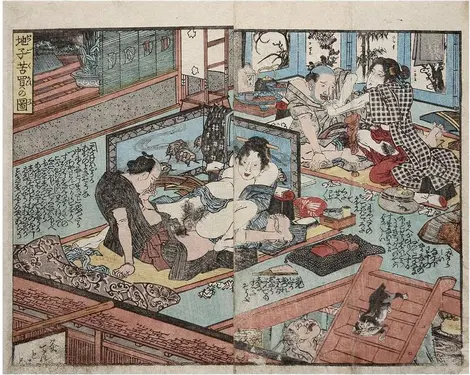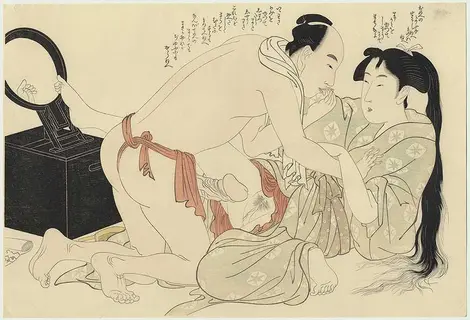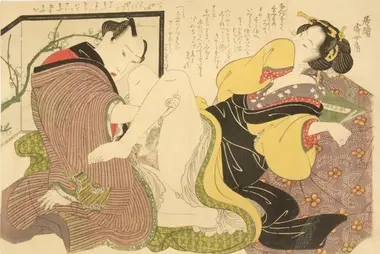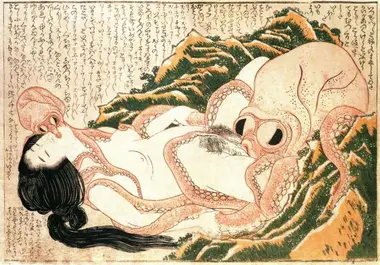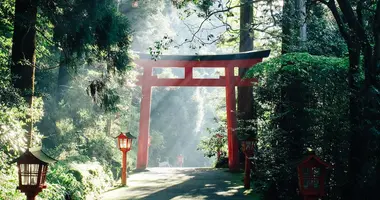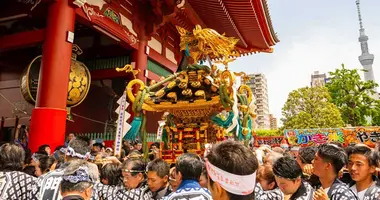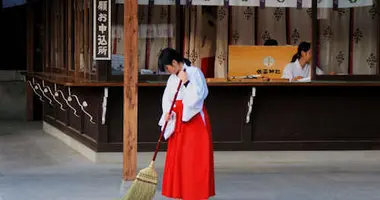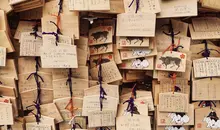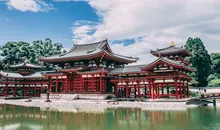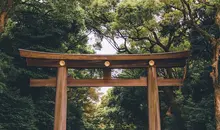Shunga 春画
L'art érotique
L’estampe japonaise a connu un rayonnement incroyable à travers la planète depuis la fin du XIXème siècle. Mais si les oeuvres de Hokusai ou de Hiroshige ont connu une diffusion telle qu’on peut les retrouver jusque sur les t-shirts de la marque Uniqlo, un autre type d’estampe s’est développé à la même époque : les estampes érotiques, ou shunga.
The other side of ukiyo-e
Ukiyo-e, or "image of the floating world" prints, mostly from the Edo period (1603 - 1868), represent the world of pleasures and its actors (courtesans, kabuki actors, etc.), as well as the nature or famous places. Following this movement was born the more confidential art of "shunga " or "image of spring", a euphemistic reference to the sexual act (in Japanese, prostitution is called "baishun" or "the sale of spring").
- Read also: Ôta Museum: the art of printmaking
These productions would originate from the Chinese erotic paintings imported during the Muromachi period (1336 - 1573) where the genitals could be represented in an excessive size. They took off during the Edo period (1603 - 1868) when, under the peace assured by the Tokugawa clan, the pursuit of pleasures became a primary concern for all those with some financial means in their pockets. The various bans on erotic works under the Tokugawa shogunate only had the effect of making activities that were always prolific clandestine. Indeed, shunga could bring a lot to artists, especially when they were sold in the form of an "enpon" book or a "kakemono-e" roll.
A diverse sexual imagination
The images of the shunga stage the sexual act, mainly heterosexual, where the man and the woman are most often dressed with only the bare genitals. Clothing has no function of modesty in shunga, nudity being common in Edo period Japan. Rather, their painting was intended to highlight the genitals, although some figures may be nude.
Beyond a heterosexual couple of the same age, many prints describe homosexual relations or couples where the elderly man
is with a young courtesan. Rarer scenes reproduce sexual intercourse with several people, or even more surprisingly, zoophilic intercourse. It is in this context that the well-known print by Hokusai, The Dream of the Fisherman's Wife, fits, where two octopuses sleep with a naked woman.
After the Meiji revolution and the introduction of photography, which completes the end of the shunga, this one will know a second life by becoming a source of inspiration for the "hentai" genre, the manga of the pornographic type.
- Also read: Sumida Hokusai Museum
